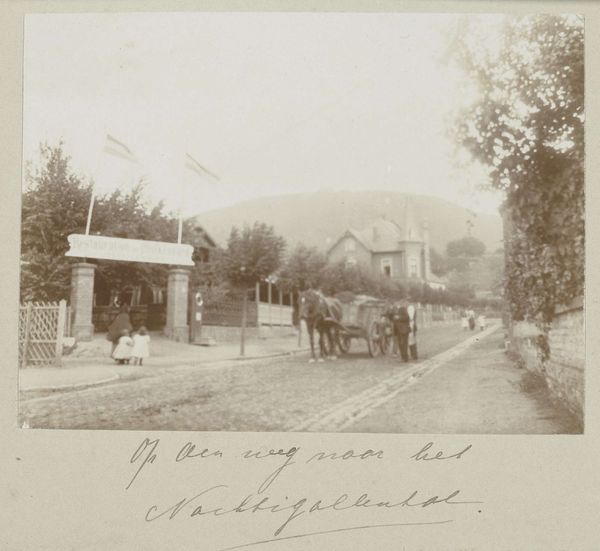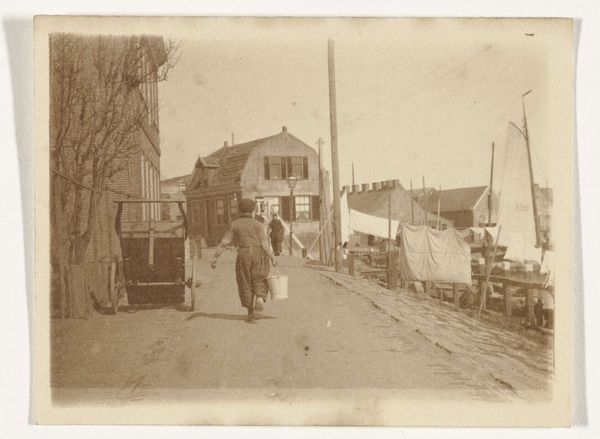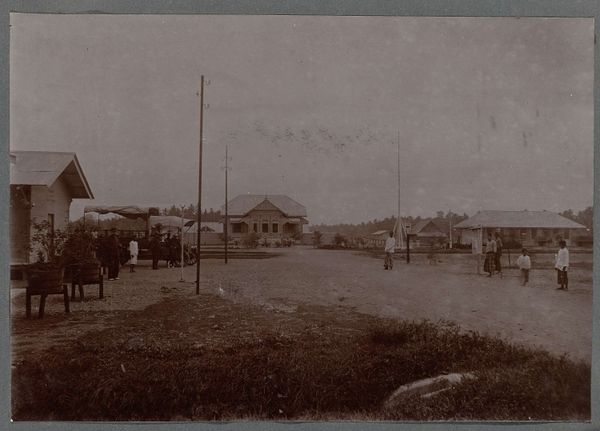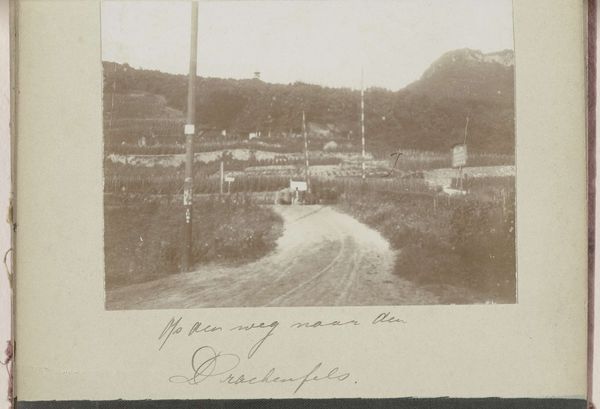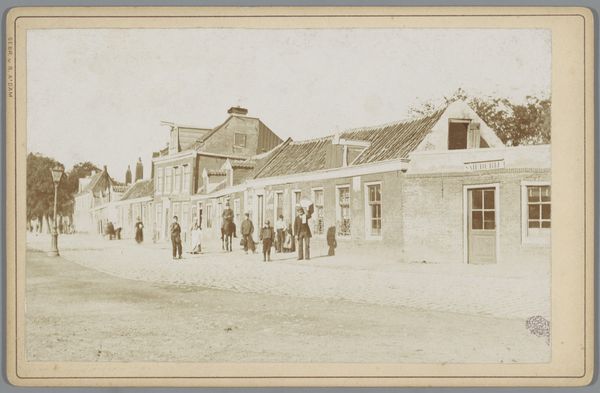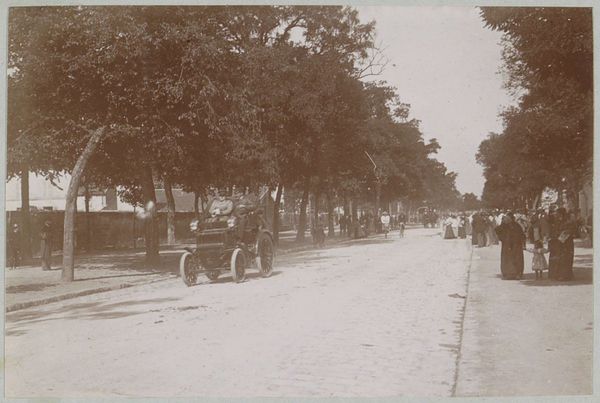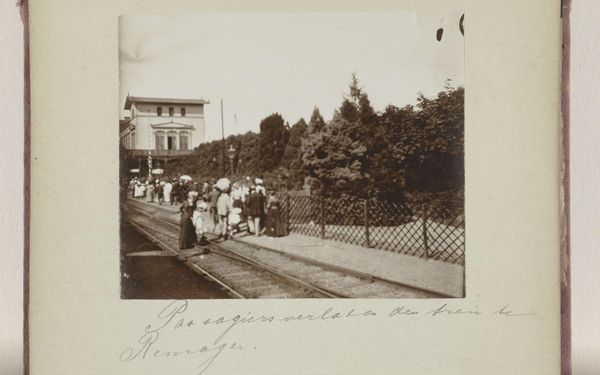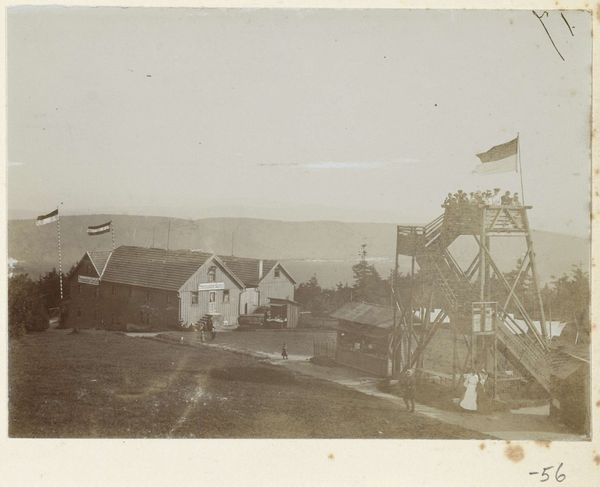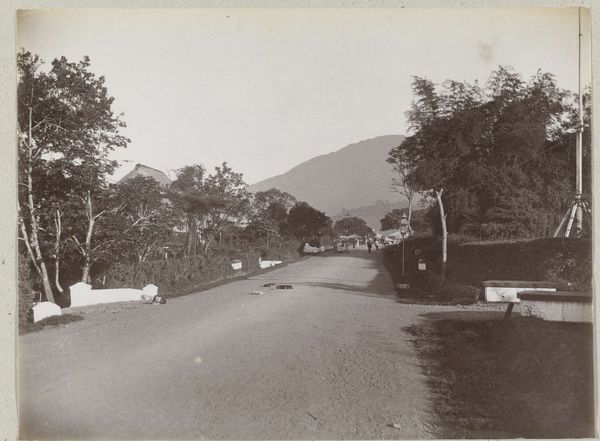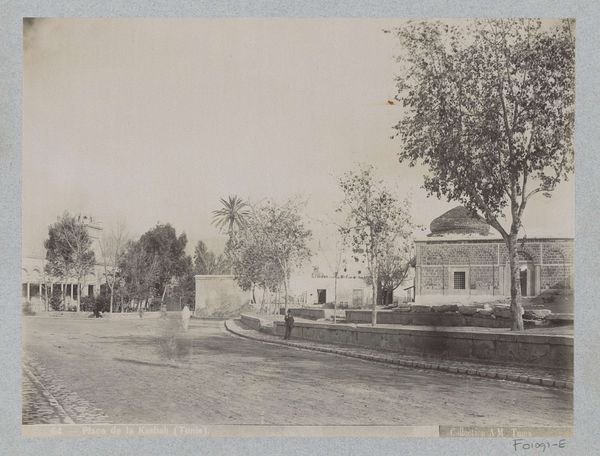
photography
#
pictorialism
#
landscape
#
photography
#
cityscape
#
street
Dimensions: height 86 mm, width 116 mm
Copyright: Rijks Museum: Open Domain
Curator: It has a certain quietude, wouldn't you say? It feels very grounded in its specific moment. Editor: Indeed. We're looking at "Straatgezicht met paard-en-wagen, Königswinter"—"Street View with Horse and Cart, Königswinter." The photographer, David Vermeulen, captured this cityscape somewhere around 1895 and 1905, during the pictorialism movement. What's striking to me is how much this image focuses on modes of transit and labour. Curator: I immediately think about the role of landscape and urban development during that period, particularly as it relates to class and labor. It feels almost documentarian in its approach to showing working-class transport against this picturesque backdrop. It highlights how everyday lives intersect with the grand narrative of industrialization and social mobility. Editor: Exactly, and consider the materiality itself: early photographic processes could be quite labour-intensive. The creation of this image was, in its own way, a product of that period’s industrial advancements, enabling greater visual access to different segments of society. How many were actively portrayed, especially with a focus on the working class, remains a more complicated subject, though. Curator: It speaks to a rising consciousness. We see how photographic images start engaging with different communities, capturing those who would be ignored by the established art world. Pictorialism allowed the development of photography as an aesthetic practice with social undertones. What looks like an innocent scene may be about social documentation and critique. The very act of visually documenting their presence is a form of resistance to erasure. Editor: The fact that a horse-drawn carriage features so prominently suggests the economic role that horses, carters and other transportation trades would have played. The cobblestone street and that house in the background really highlight a certain lifestyle too, though not necessarily an affluent one. I am curious what the process involved in capturing these images was, how difficult or costly. That impacts who gets pictured and who holds the camera, right? Curator: Absolutely. And it’s through that lens—by interrogating who's doing the image-making, and what perspectives are promoted—that we discover the real cultural significance of artworks such as these. These photos captured daily scenes while reflecting evolving values around identity. Editor: Right. When you look beyond the pure artistry and toward what’s pictured, it makes one reflect upon who has been traditionally viewed as a muse, or worthy of preservation— and the labor invested behind even seemingly simple scenes. Curator: I'm glad we took a deeper look; the narrative surrounding such pieces can be surprisingly insightful. Editor: Yes, indeed! Now, off to our next exhibit.
Comments
No comments
Be the first to comment and join the conversation on the ultimate creative platform.
